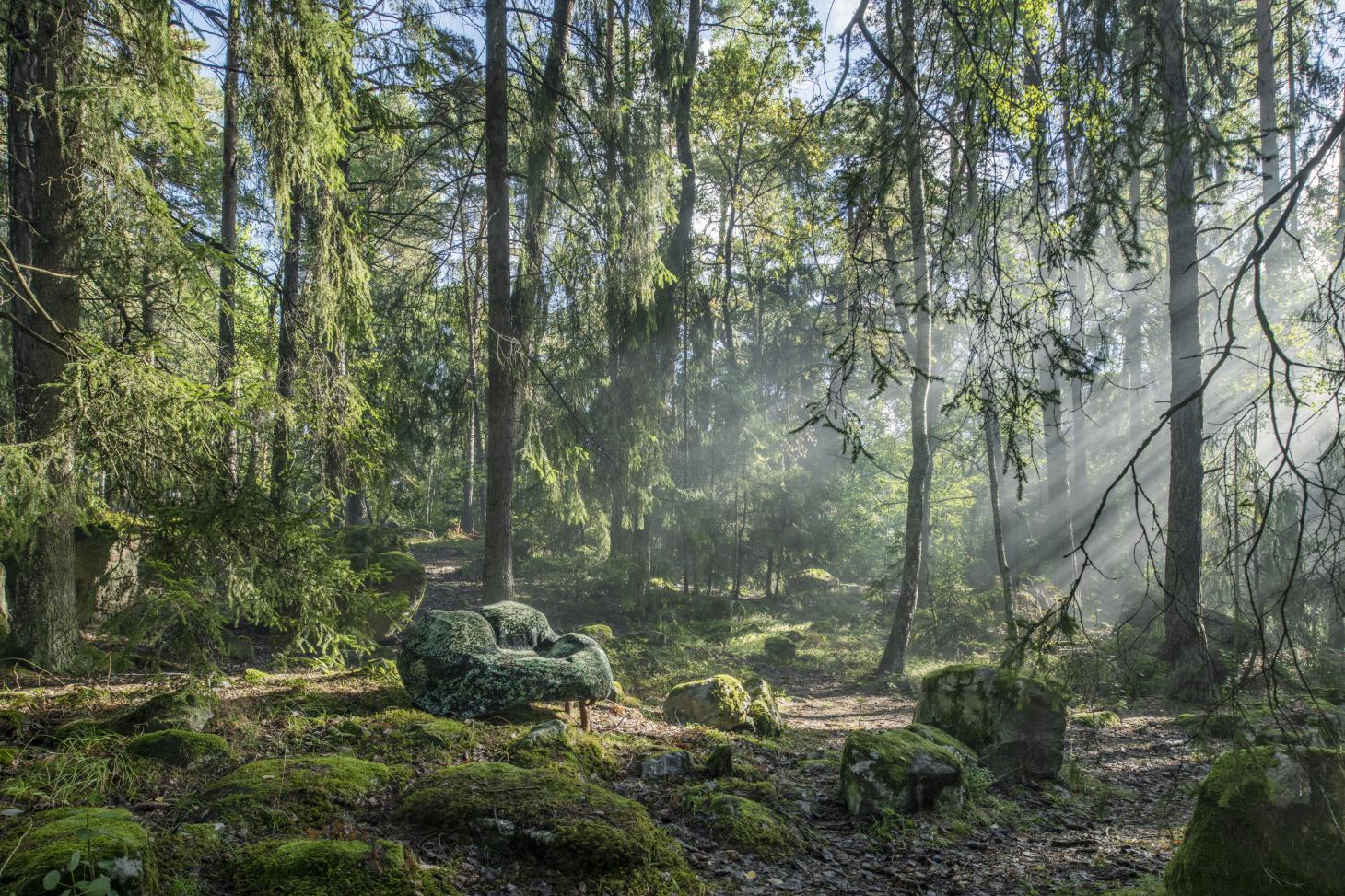Following quite a while of examination into the wild of Swedish backwoods, the plan team fostered an assortment with Moroso that imitates normal surfaces with furniture. A portion of their plans have now been converted into pragmatic seating for the home
Copying the examples of the woodland, A piece of seating from Front’s Temperament Furniture series for Moroso, captured in Sweden’s Roslagen archipelago
Living in Sweden, Sofia Lagerkvist and Anna Lindgren, of plan studio Front, have an inborn association with the more stunning side of nature. ‘Nature is consistently around the bend any place you are in this country,’ the fashioners notice. ‘We have sensational contrasts between the seasons: summer is totally light and winter is dull, and that makes you aware of what nature means for you in an exceptionally immediate manner.’
Nature has been a repetitive subject for Front, whose pieces frequently include sculptural versions of creatures, portrayals of regular peculiarities and natural structures. Yet, throughout recent years, the pair have gone further, leading a logical investigation of the shapes, designs and surfaces saw as in nature. Building a global organization of researchers and specialists, and taking themselves to Swedish backwoods to photo and output the climate, Lagerkvist and Lindgren acquired a comprehension of the engineering of the timberland and its living frameworks, which has, thus, illuminated their most aggressive undertaking to date – presently developed into an assortment of seating that was introduced at Salone del Portable 2022.
Rock Rubble furniture by Front for Moroso
‘Rock Rubble’, the advancement of Front and Moroso’s coordinated effort, upholstered in Kvadrat Febrik materials
Named Plan Ordinarily, the first undertaking by Front was initially uncovered in 2020 and it incorporates furniture, articles and materials straightforwardly educated by the regular peculiarities the pair explored. To rejuvenate their thoughts, they found an ideal creation accomplice in Patrizia Moroso, a long-term colleague and companion. Front’s debut series for Moroso, created in 2008 and named Second, included furniture that made optical deceptions. It’s a stunt they need to rehash. ‘We need to intrigue the watcher on various levels, and the deception sets off the sensation of interest, of attempting to comprehend what something truly is and what it is produced using,’ says Lagerkvist.
With Plan Naturally, they take this idea to a higher level. The primary pieces structure a series they call Nature Furniture, working like customarily upholstered seating yet seeming to be rock developments canvassed in patches of greenery. The pair worked with Moroso to reproduce regular surfaces on materials utilizing 3D examining and photography. Patrizia Moroso then, at that point, enrolled material specialists, for example, Kvadrat Febrik and Limonta to foster carefully printed textures, as well as jacquards and gobelins that emulate the pictures caught by Front.
Postcard-wonderful nature isn’t the most interesting. We love the cool, blustery, crude and revolting nature
The idea was roused by concentrates on that show how investing energy in nature emphatically affects general prosperity, memory and imagination. ‘This thought made us puzzle over whether it very well may be feasible to bring parts of wild, of the normal world, straightforwardly into homegrown settings. We needed to make the inclination that somebody had lifted an entire knoll from a woods with a huge digging tool and moved it to a home. The pieces attempt to reproduce the sensation of hanging out in a woodland on the overgrown ground, on a precipice by a lake, or of sinking into a snowdrift,’ the creators say.
Fashioners Sofia Lagerkvist and Anna Lindgren with Nature Furniture in the timberland
Fashioners Sofia Lagerkvist and Anna Lindgren
The second piece of the assortment is centered around creatures’ own manifestations. Lagerkvist and Lindgren spent a few late spring a very long time throughout the course of recent years investigating bears’ tunnels, tree trunks cut by beavers, surfaces made by woodpeckers and bugs, burrows dug by hares and the homes of wasps and mole crickets. They checked wolves’ and owls’ tracks on the snow, took a gander at single-cell single adaptable cells, and fossilized defecation from around a long time back. The originators likewise took a gander at a timberland’s course of events, noticing the order of creatures assuming control over its spaces after a fire.
Their pictures, outputs and representations show an exceptionally crude and clinical translation of the backwoods, not a glorified variant. ‘Postcard-lovely nature isn’t the most intriguing. We love the chilly, blustery, crude and revolting nature,’ they notice. The articles that they considered were then trained – 3D printed and duplicated in porcelain, wood and reused glass, and rescaled to function as side tables, jars and lighting objects.
The planners’ perspective on the normal world was an unmistakable draw for Patrizia Moroso, who turned into a necessary piece of the inventive flow. ‘I knew all about this subject of nature as a maker of shapes and designs,’ says Moroso. ‘It’s not by chance that this task is called Plan Commonly. It’s anything but an old-style, heartfelt idea, it’s another logical and mechanical methodology, as it recreates the organicity of a characteristic item with contemporary instruments. Front’s work as planners is to research and track down fascinating peculiarities, to leave them immaculate, to examine them and to loyally recreate them – I think this is virtuoso.’
The examination component of the task has maybe been the most empowering. ‘It’s been moving to perceive how planners can become connectors,’ notices Lagerkvist. Lagerkvist and Lindgren propose that a course of examination and investigation will keep on illuminating their work. ‘We have consistently wanted to make projects that take a strand of exploration that then begins to disentangle and fill surprisingly,’ they say.
Patrizia Moroso summarizes the assortment as a blend of straightforward structures and complex surfaces and surfaces that together can reproduce the intricacy of nature in the eye of the watcher. ‘A transaction among plan and nature is vital during circumstances such as the present,’ she says. ‘We have such a long way to go from nature.’
